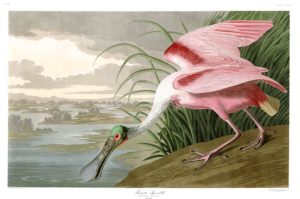Shot on the stunningly beautiful Ards Peninsula Ards Peninsula in Northern Ireland, My Mother and Other Strangers (PBS Distribution) portrays the culture clash when a U.S. bomber base is established near the fictional village of Moybeg in 1943, bringing hundreds of gum-chewing, swing-band-listening American airmen to a remote Ulster farming community, with its winsome women and stolid workingmen.
The action is framed from the point of view of a young boy, Francis Coyne, whose childhood is populated by strangers. On the one hand, there are the friendly Americans in their Jeeps and airplanes, who treat him like a little brother.
Then there is his mother, Rose, an upright Englishwoman who married Michael Coyne and moved to his hometown, Moybeg, where she is raising their three children, teaching in the village school, and tending a grocery shop next to Michael’s pub. Despite being a pillar of the community, Rose has never fit in. She speaks more properly than the locals, loves English literature, and has a lively interest in the wider world.
Into this isolated domain comes Captain Ronald Dreyfus, U.S. Army Air Forces, who encounters Rose during a walk on the heath. When they meet again, he quotes her a line from Tennyson’s “The Lady of Shalott”—one of her favorite poems.
Captain Dreyfus is as reserved as Rose is. But in his capacity as base liaison officer, he has occasion to see her frequently: dealing with a fracas between airmen and regulars at the pub, arranging for an army nurse to care for a sick child, and planning a Christmas party for the school.
Both would-be lovers fight against the stronger feelings that are overwhelming them—emotions that are increasingly evident to those around them.
Wary of betraying her husband, Rose feels seized by some otherworldly force, a sentiment she can only recognize from a piece of literature—Emily Brontë’s Wuthering Heights—which she quotes from memory: “Be with me always—take any form—drive me mad! only do not leave me in this abyss, where I cannot find you!”
During its recent UK broadcast, viewers and critics were deeply moved by this bittersweet tale. “No other recent drama has captured quite so keenly a sense of the complex, hidden, unspoken desires that can roil away beneath even the quietest surface,” wrote the reviewer for The Telegraph.

 We turn the spotlight onto two must-have documentaries on DVD: Public Media Distribution’s Audubon (available June 20) and PBS Distribution’s American Masters: Alice Waters and Her Delicious Revolution (now available).
We turn the spotlight onto two must-have documentaries on DVD: Public Media Distribution’s Audubon (available June 20) and PBS Distribution’s American Masters: Alice Waters and Her Delicious Revolution (now available).